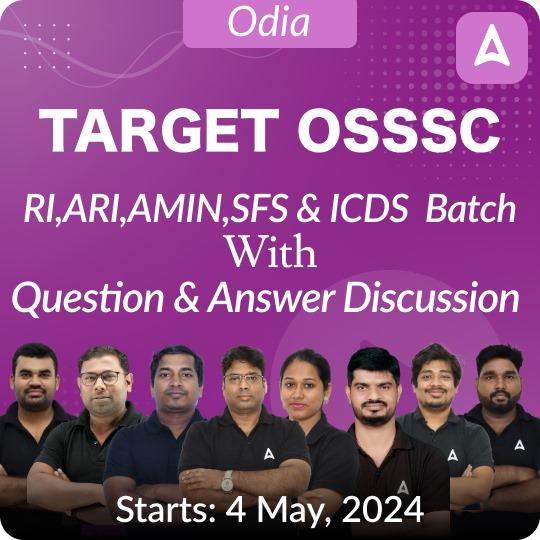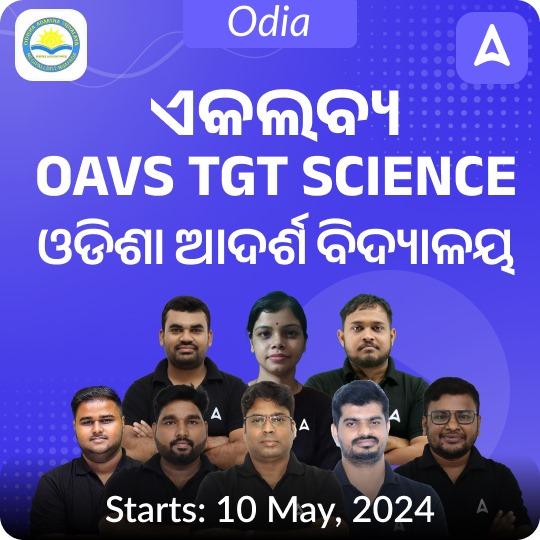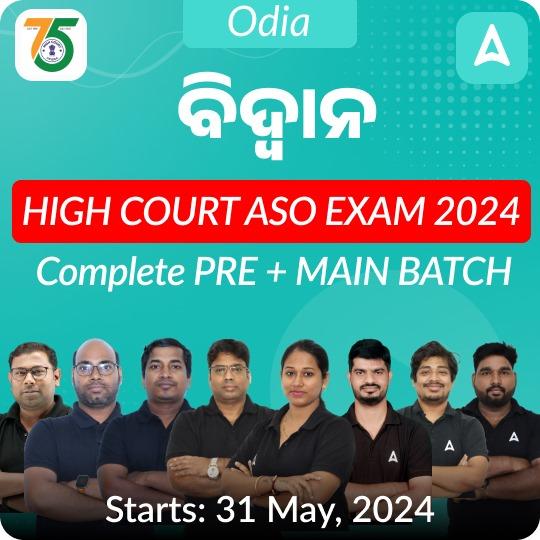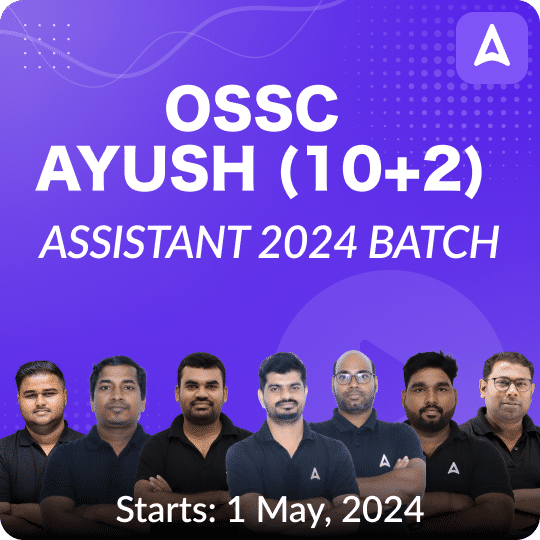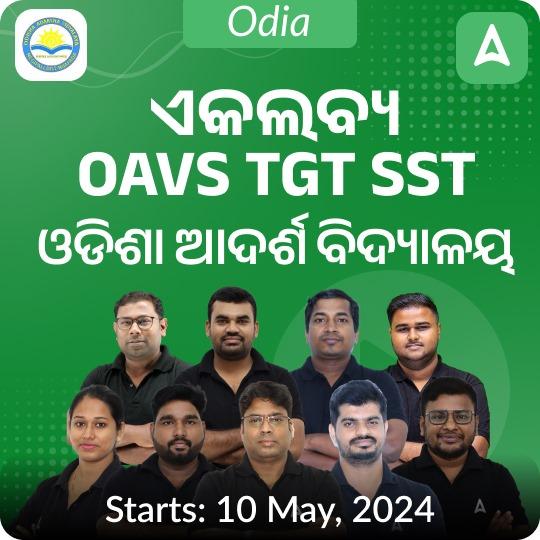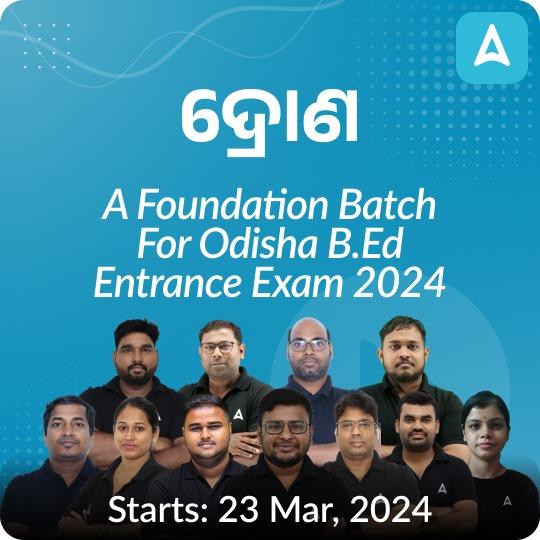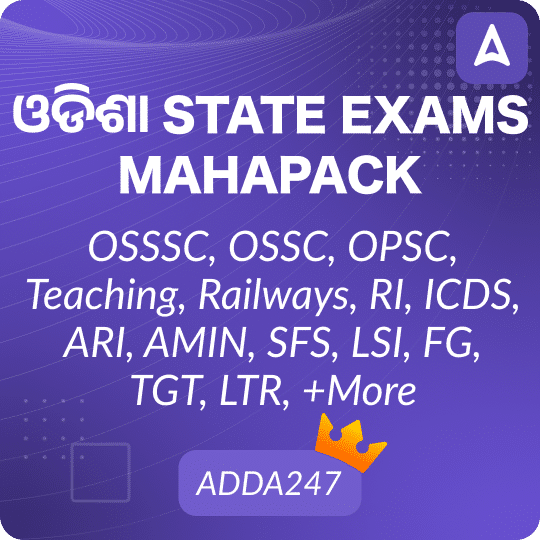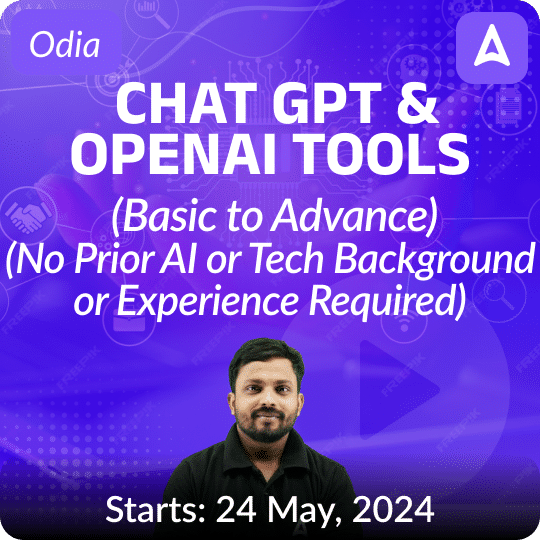As you are aware, in all competitive exams, the “Daily Current Affairs Section” holds significant importance in determining the cutoff scores. Therefore, if you excel in 8 section, you will have a better chance of achieving higher marks in these exams and securing a spot on the merit list.
Addapedia Odisha – Daily Current Affairs -29 November 2024
| National and International News |
| PM-Surya Ghar Muft Bijli Yojana |
Why in news?
- Gujarat tops the list in Rooftop Solar System installations under the PM-Surya Ghar Muft Bijli Yojana.
Key Points:
- It is a government scheme launched on February 15, 2024, that aims to provide free electricity to households in India.
- Under the scheme, households will be provided with a subsidy to install solar panels on their roofs.
- The subsidy will cover up to 40% of the cost of the solar panels.
- The scheme is expected to benefit 1 crore households across India.
- It is estimated that the scheme will save the government Rs. 75,000 crore per year in electricity costs.
- Under the scheme, DISCOMs are designated as State Implementation Agencies (SIAs) responsible for facilitating various measures, including net meter availability, timely inspection, and commissioning of installations.
- DISCOMs will receive incentives based on their achievement in the installation of additional grid-connected rooftop solar capacity beyond a baseline level.
|
| K-4 Missile |
Why in news?
- India has successfully tested a nuclear-capable ballistic missile, K-4 with a range of approximately 3,500 km, launched from a nuclear-powered submarine in the Bay of Bengal.
- This marks a significant enhancement of its nuclear deterrence and strategic capabilities.
Key Points:
- The K-4 is a submarine-launched ballistic missile (SLBM) developed by India’s Defence Research and Development Organisation (DRDO).
- The K-4 is a variant of the land-based Agni-III missile, and is designed to arm India’s nuclear-powered submarines:
- Range- The K-4 has a range of 3,500 kilometers and can reach almost all of Pakistan and parts of China.
- Size- The K-4 is 10 meters long, weighs 20 tonnes, and has a diameter of 1.3 meters.
- Payload- The K-4 can carry a 2 tonne payload.
- Guidance- The K-4 uses an inertial navigation system with GPS/NavIC satellite guidance for mid-course, and terrain contour matching for terminal guidance.
- Engine- The K-4 has a two stage solid rocket motor and uses solid rocket propellant.
|
| Ayushman Bharat Scheme |
Why in news?
- Atishi says Delhi is ready in principle to implement the Centre’s Ayushman Bharat scheme.
Key Points:
- It is the world’s largest health assurance scheme.
- Year of Launch – 2018 as recommended by the National Health Policy, 2017
- Ministry – Ministry of Health and Family Welfare (MoHFW)
- Aim – To achieve the vision of Universal Health Coverage (UHC) which encompasses promotive, preventive, curative, palliative and rehabilitative care.
- Funding – Centrally Sponsored Scheme (expenditure incurred in premium payment will be shared between Central and State governments)
- Coverage – Targets over 10 crore families (approximately 50 crore beneficiaries) based on SECC (Socio-Economic Caste Census)
- Implementing Agency – National Health Authority (NHA)
- Ayushman Bharat Digital Mission (ABDM) – It was launched in 2021 to provide Unique Digital Health IDs (UHID) for all Indian citizens to help hospitals, insurance firms, and citizens access health records electronically when required.
|
| Graded Response Action Plan (GRAP) |
Why in news?
- The Supreme Court directed the implementation of heightened Stage 4 restrictions under the Graded Response Action Plan (GRAP) to address air pollution in Delhi and the National Capital Region.
Key Points:
-
- GRAP is a framework designed to combat air pollution in the Delhi-NCR region.
- It was introduced as an emergency response mechanism, and its implementation is triggered when the Air Quality Index (AQI) reaches “poor” levels.
- GRAP is particularly important during the winter months when air quality tends to plummet.
- The Commission for Air Quality Management (CAQM) in NCR and adjoining areas oversees the implementation of GRAP.
- It collaborates with the Ministry of Environment, Forest and Climate Change (MoEFCC).
- The CAQM has constituted a sub-committee for the operationalization of the GRAP.
- Different stages of GRAP: GRAP consists of four stages, each with targeted actions to be taken by the necessary authorities and agencies. These are the following:
-
- Stage I: “Poor” air quality (Delhi AQI: 201-300)
- Stage II: “Very Poor” air quality (Delhi AQI: 301-400)
- Stage III: “Severe” air quality (Delhi AQI: 401-450)
- Stage IV: “Severe+” air quality (Delhi AQI > 450)
What is the Air Quality Index (AQI)?
- AQI is issued by government agencies to gauge air pollution levels and communicate risks to the public.
- It indicates how air pollution can affect health, with higher AQI values indicating more severe health concerns.
- According to the AQI scale, the air quality check between 0 and 50 is “Good”, 51 and 100 “Satisfactory”, 101 and 200 “Moderate”, 201 and 300 “Poor”, 301 and 400 “Very Poor”, 401 and 450 “Severe” and over 450 as “Severe +
|
| ‘Bal Vivah Mukt Bharat’ Campaign |
Why in news?
- The Union women and child development minister recently launched the “Bal Vivah Mukt Bharat Campaign”.
Key Points:
- It was launched by the Ministry of Women and Child Development, Government of India.
- It seeks to engage multiple stakeholders in a collective effort to eliminate child marriage in India.
- It will focus on the seven high-burden states-West Bengal, Bihar, Jharkhand, Rajasthan, Tripura, Assam, and Andhra Pradesh-and nearly 300 high-burden districts where child marriage rates are high as compared to the national average.
- The campaign will call on every State and Union Territory to devise an action plan aimed at reducing the child marriage rates below 5% by 2029.
- A key feature of the initiative is the launch of the Child Marriage Free Bharat portal, a platform to raise awareness, report cases, and monitor progress.
|
| Odisha Specific News |
| NITI Aayog |
Context:
- The Odisha government is set to restructure the State Planning Board to align it with the NITI Aayog model.
- The reconstitution of the Planning Board is expected to bolster Odisha’s capacity to drive development initiatives, prioritize resource allocation, and address regional disparities.
Key Points about NITI Aayog:
- NITI Aayog, or the National Institution for Transforming India, is a government think tank that was established in 2015 to replace the Planning Commission.
- It is the apex public policy think tank of the Government of India
- NITI Aayog is chaired by the Prime Minister of India, and its members include the Chief Ministers of all states and union territories, as well as other experts and representatives from various sectors
|
| PM-POSHAN (Pradhan Mantri Poshan Shakti Nirman) |
Context
- The Odisha government has formed a high-level committee to enhance the implementation of the Pradhan Mantri Poshan Shakti Nirman (PM POSHAN) scheme in the state.
- The committee will focus on improving the quality of mid-day meals, ensuring nutritional adequacy, and strengthening the overall food delivery system.
Key Points:
- The State Nodal Officer for PM POSHAN in Odisha has been designated as the chairperson of the committee.
- It also includes representatives from the National Institute of Nutrition, Hyderabad, and the World Food Programme, alongside representative from the Health and Family Welfare Department and the Director of Secondary Education, Odisha as Members.
PM-POSHAN (Pradhan Mantri Poshan Shakti Nirman)
- The Mid-Day Meal Scheme is now renamed the Pradhan Mantri Poshan Shakti Nirman (PM POSHAN) scheme.
- It is a Centrally Sponsored Scheme
- It will provide one hot cooked meal per day in Government and Government-aided Schools from 2021–2025.
- The Ministry of Education is carrying out the Scheme.
- The primary goals of the PM POSHAN Scheme (previously known as the Mid-Day Meal Scheme) are to address two of the most pressing issues facing the majority of children in India, namely hunger and education, by enhancing the nutritional status of eligible students in Government and Government-aided schools and encouraging low-income students from disadvantaged sections to attend school more frequently and aiding in their ability to concentrate in class.
|
| Odisha changes names of 21 schemes |
Context:
- Odisha govt plans to rename 21 schemes previously implemented under the Naveen Patnaik administration.
- Some of the major schemes cashed in on by Biju Janata Dal (BJD) to derive electoral benefits have also undergone the change.
Key Points:
- The Schemes have now been rebranded with neutral names eg,. Krushak Assistance for Livelihood and Income Augmentation (KALIA), which was launched by Naveen Patnaik just before 2019 elections, is now known as PM-KISAN scheme.
- Some schemes now bear the title of ‘Mukhya Mantri’ (Chief Minister), while others have been renamed after revered figures including freedom fighter Gopabandhu Das and literary icon Godabarish Mishra, replacing the legacy of the late Biju Patnaik.
Schemes Discontinued:
- Several prominent schemes in Odisha, including the Biju Swasthya Kalyan Yojana (BSKY), Biju Pucca Ghar, Biju Setu Yojana, Biju Yuva Sashaktikaran Yojana, Biju Saharanchal Vidyutikaran Yojana (BSVY), Biju KBK, Biju Kandhamal ‘o’ Gajapati Yojana, and Biju Sishu Surakhya Yojana, have been discontinued.
|
| INS Arighaat |
Context:
- India successfully test-fired the indigenously developed long range nuclear-capable ballistic missile K-4 from a home grown submarine in the Bay of Bengal, making it a strategic player in the South East Asia region.
Key Points:
- The submarine-launched ballistic missile (SLBM) was flight-tested by the Strategic Forces Command (SFC) for the first time from INS Arighaat .
- Developed by DRDO, the missile successfully hit its target in the Indian Ocean region with high accuracy.
- INS Arighaat is a 6,000-tonne nuke-powered submarine that was commissioned in the armed forces in August 2024.
INS Arighat:
- INS Arighat is a frontline stealth frigate of the Indian Navy.
- It is part of the Project 17A class of stealth frigates, which are designed to be highly advanced and capable of operating in diverse maritime environments.
- INS Arighat is equipped with state-of-the-art weapons and sensors, making it a formidable warship.
|
| Project 17A |
Context:
- Project 17A is a class of stealth frigates being built for the Indian Navy.
- These ships are designed to be highly advanced, equipped with state-of-the-art weapons and sensors.
- The frigates are capable of carrying a variety of missiles, including anti-ship, anti-air, and anti-submarine missiles.
Key features of Project 17A frigates:
- Stealth Technology: These ships incorporate stealth features to reduce their radar signature.
- Advanced Weapons Systems: Equipped with a range of modern weapons systems for offensive and defensive capabilities.
- Sensor Fusion: Advanced sensors for enhanced situational awareness.
- Anti-Submarine Warfare: Capable of detecting and tracking submarines.
- The induction of these frigates will significantly enhance the Indian Navy’s capabilities and contribute to maritime security in the Indian Ocean region.
|
| Copyright © by Adda247
All rights are reserved. No part of this document may be reproduced, stored in a retrieval system or transmitted in any form or by any means, electronic, mechanical, photocopying, recording or otherwise, without prior permission of Adda247. |



